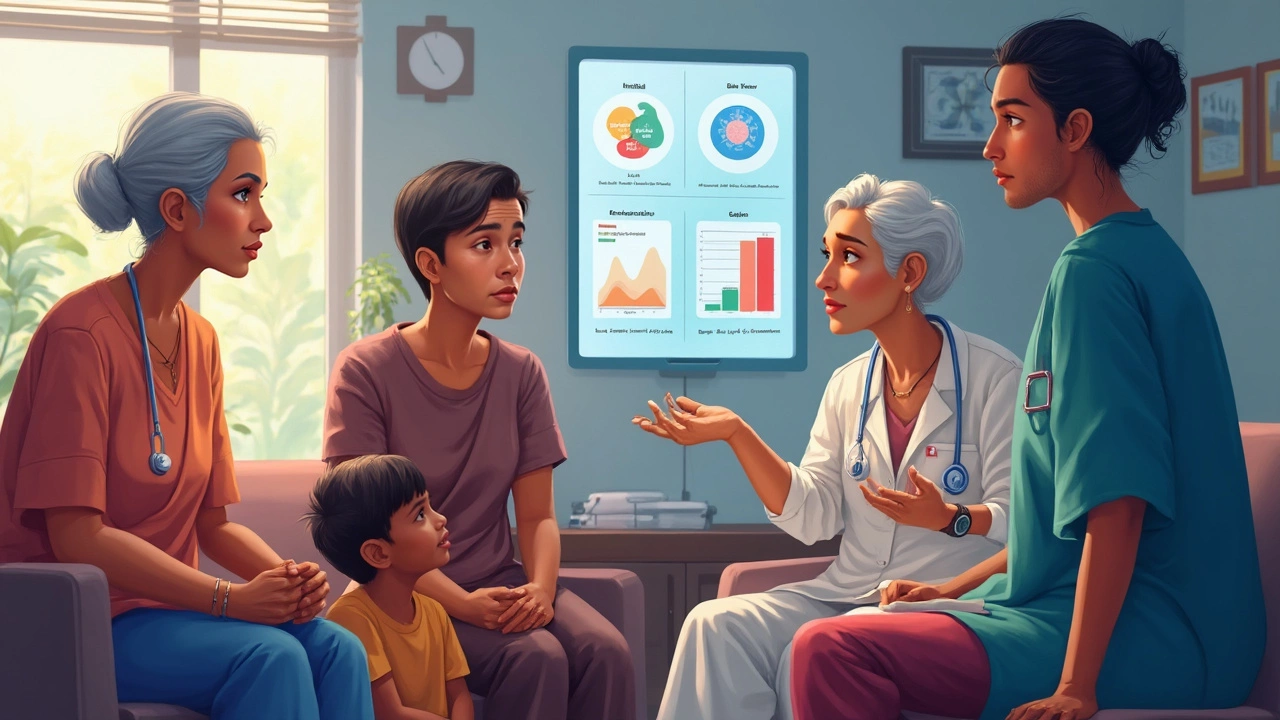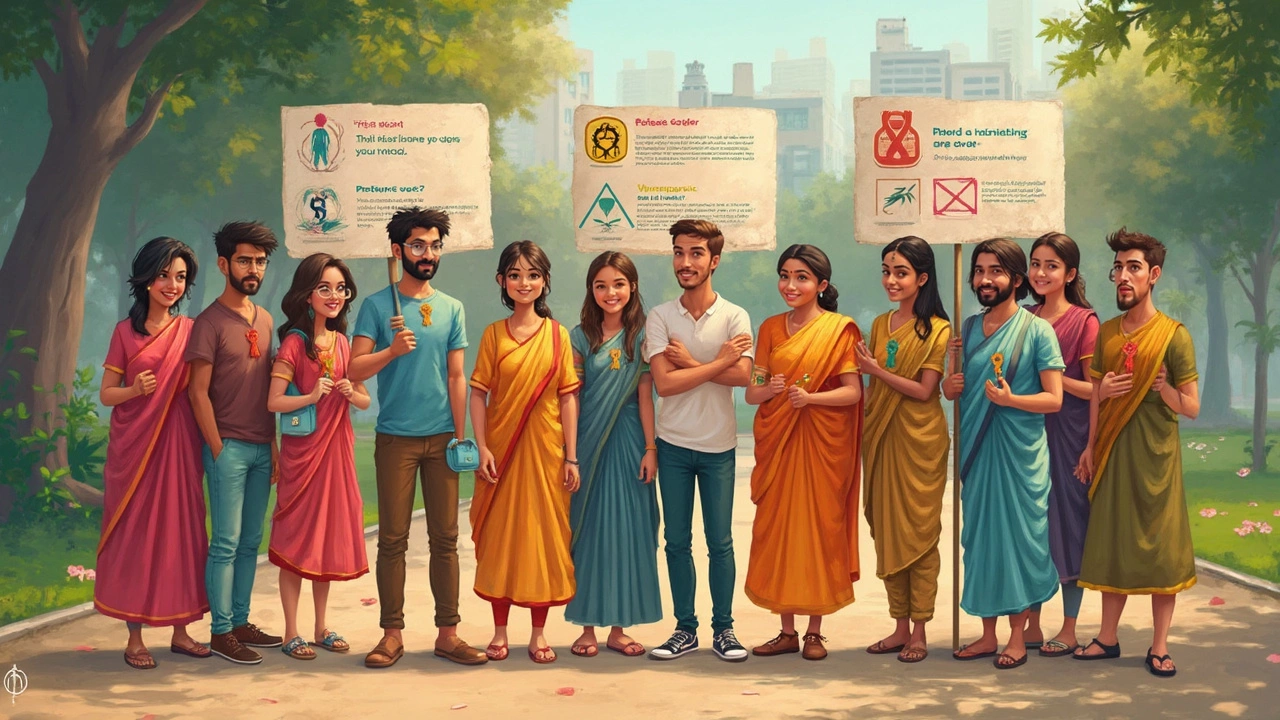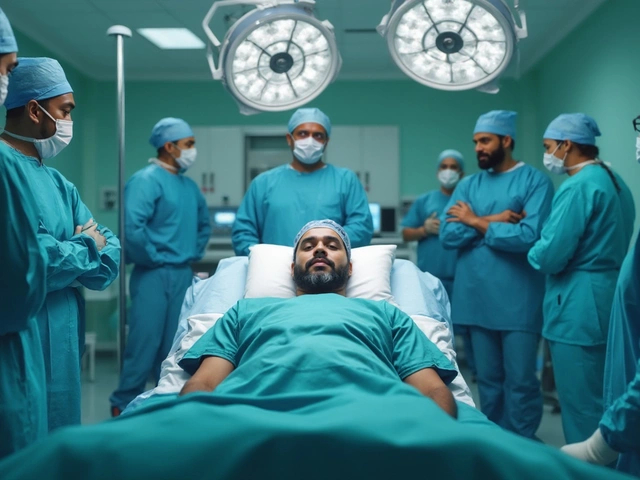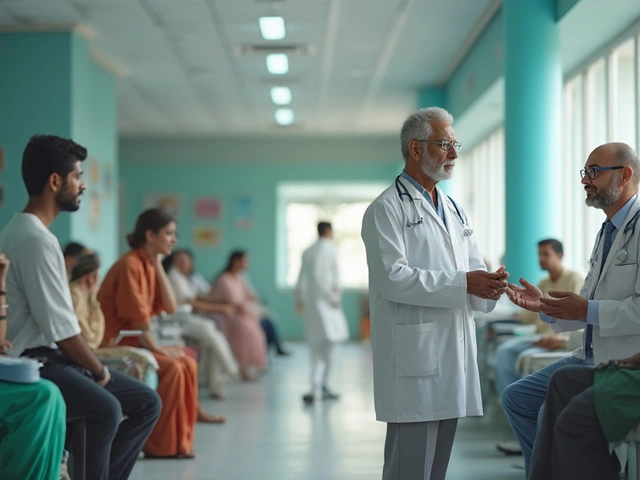Some cancers seem unstoppable. Every year, millions lose their lives to just three types—lung, colorectal, and liver cancer. This isn't just a list; it's a wake-up call.
If you think cancer only happens to 'someone else,' think again. Top doctors warn that faulty genes play a part, but your lifestyle and environment tip the odds way more than most people realize. Half the world’s cancer deaths are tied to just a handful of habits—smoking, heavy drinking, bad diets, and skipping those boring screenings.
If you want to dodge the top killers, you need to know what actually puts you at risk, what early warning signs matter, and what the best screening options look like. It’s not about panicking—it’s about being smarter and ready, before it’s too late.
- Why Cancer is Still Winning the War
- Lung Cancer: Silent and Relentless
- Colorectal Cancer: The Hidden Warning Signs
- Liver Cancer: A Rising Global Threat
- Spotting Trouble Early: What Actually Works
- New Hope: Better Treatments Are on the Way
Why Cancer is Still Winning the War
Here’s the blunt truth: even with all the high-tech scans and fancy hospital wings, cancer death rates are still far higher than anyone would like. According to the World Health Organization, cancer kills about 10 million people worldwide each year. That’s like wiping out the whole population of a major city—every single year.
So, what gives? Too many cancers just slip under the radar. By the time you’re coughing up blood or have serious pain, things have usually gone too far. For a lot of people, symptoms show up late or look like everyday problems. Most folks find out only by accident, during a scan for something else.
These top 3 killing cancers—lung, colorectal, and liver—share some sneaky moves. They spread fast, hide well, and show only vague symptoms. On top of that, they hit hardest in people who don’t have great access to doctors, can’t afford regular screening, or don’t know what signs to watch for. Geography matters too: places with a ton of smoking, pollution, and risky lifestyles have the worst odds.
Here’s how these cancers stack up by global deaths, based on recent WHO numbers:
| Cancer Type | Annual Deaths (Global) |
|---|---|
| Lung | ~1.8 million |
| Colorectal | ~935,000 |
| Liver | ~830,000 |
The simple fact is, we’re still not catching these cancers early enough. A lot of people put off screenings or ignore symptoms. Almost half of cases show up at stage three or four, when the odds are already stacked against you.
Making real progress means more than just new medicines. It’s about easier screening, smarter prevention, and actually helping folks who don’t show up at hospitals until they’re really sick. If you want to drop your own odds, watch your lifestyle, know those warning signs, and don’t skip the checkups.
Lung Cancer: Silent and Relentless
When it comes to the top killing cancers, lung cancer sits at number one worldwide. It's not picky about age or background. The scary part? Most people don't notice anything is wrong until the disease is late and hard to treat. You could walk around with lung cancer for months, even years, without so much as a cough.
The biggest culprit is smoking. It's responsible for about 85% of all cases. But even non-smokers aren't off the hook. Breathing in secondhand smoke, working around asbestos, or living where air pollution is bad can also do the trick. Genetic factors matter too, but lifestyle and environment play a much bigger part.
| Lung Cancer Facts (2025 Data) | Number/Percent |
|---|---|
| New cases worldwide (last year) | ~2.2 million |
| Deaths worldwide (last year) | ~1.8 million |
| Linked to smoking | 85% |
| Survival rate (5 years) | Approx. 19% |
How do you know if you or someone you love is at risk? Most of the time, symptoms stay quiet until things get serious. But a few red flags can show up, like ongoing coughs, coughing up blood, wheezing, chest pain, or unexplained weight loss. Don’t blow these off, especially if you have a history of smoking or have been breathing in toxic stuff for years.
- Cancer treatment for lung cancer is tough. Early-stage cases can be treated with surgery and sometimes cured, but most people find out when it’s already spread.
- Screening with low-dose CT scans has made a big difference for high-risk folks (heavy smokers over 50). This test can catch cancer before it gets out of hand.
- Quitting smoking, even if you’ve smoked for years, seriously lowers your risk.
The bottom line: if you ever needed a reason to quit smoking or push your doctor for a scan, this is it. For cancer death rates, lung cancer is the sneakiest—and deadliest—by far.
Colorectal Cancer: The Hidden Warning Signs
Let’s talk about colorectal cancer, which often slips under the radar until it’s already doing damage. This cancer hits the colon or rectum and, according to the World Health Organization, it’s the second deadliest worldwide, right after lung cancer. What makes it so sneaky? Most people have no symptoms at all, especially in the early stages.
Here’s the problem: by the time you notice anything weird—like blood in your stool, changes in how often you go to the bathroom, cramping, unexplained weight loss, or super low energy—the cancer might already be well-developed. These signs can be subtle or simply brushed off as something else.
- Blood in the stool is one of the big red flags. If you spot that, don’t just ignore it.
- Changes in your usual bathroom habits—either going more or less often, or stools that look different—can be warning signs.
- Unexplained weight loss when you’re not even trying is worth checking out.
- Persistent tiredness or feeling really weak can mean a lot of things, but with colorectal cancer, it's a common tip-off.
The risk goes up after age 50, but it’s showing up more in younger adults than it used to. Diets low in fiber and high in red or processed meats are linked to higher odds. Sitting around a lot, heavy alcohol use, and being overweight add fuel to the fire.
| Colorectal Cancer Fact | Details |
|---|---|
| Second leading cause of cancer death | Every year, over 900,000 deaths globally |
| Screening saves lives | Colonoscopies can catch cancer early or even stop it by removing polyps |
| Early symptoms? | Often none, which is why screening matters |
If you’re over 45, most experts say routine screenings are non-negotiable. Sometimes, starting even earlier makes sense if your family has a track record with this disease. The main test is a colonoscopy, but there are stool tests that check for hidden blood or DNA from tumors. Don’t let the prep freak you out—it could literally save your life.
If you notice blood when you wipe, or something feels off for more than a few weeks, check with your doctor. Figuring out cancer death rates isn’t as important as realizing you can actually lower your risk by paying attention and not skipping those tests.

Liver Cancer: A Rising Global Threat
Liver cancer doesn’t get the same headlines as some others, yet it's one of the top killing cancers globally. Over 800,000 people die from it every year, and the numbers are climbing, especially in Asia and Africa. The main type you’ll hear about is hepatocellular carcinoma, which makes up the bulk of cases.
Why are cases going up? Chronic infections from hepatitis B and C are big reasons. In places where these viruses are common, liver cancer rates are sky-high. But it’s not just infections: heavy drinking, obesity, and diabetes also raise your risk. More junk food and alcohol worldwide aren’t helping.
Here’s a quick look at what’s making liver cancer so deadly:
- It’s hard to spot early. Most people have no symptoms until it’s late.
- By the time you feel anything—like weight loss, yellow skin, or stomach pain—it’s often advanced.
- Most treatments work best when the cancer is found small and early, but that rarely happens.
Just look at this:
| Region | 5-Year Survival Rate |
|---|---|
| United States | 20% |
| East Asia | 5%-12% |
| Europe | 12%-20% |
Those survival rates are low—way lower than most people think. So, how do you lower your chances? There are a few practical steps:
- Get a hep B vaccine. It’s simple and can prevent lots of cases.
- If you have hepatitis B or C, see a doctor and get treated. There are good meds now.
- Cut down on alcohol. Heavy drinking messes up your liver fast.
- Keep your weight healthy and watch out for diabetes—fatty liver is now a major driver in many countries.
You can’t control everything, but taking a few of these steps really does lower your risk of this deadliest cancer. Don’t ignore the small stuff—liver cancer hardly ever shouts. It whispers, then hits hard.
Spotting Trouble Early: What Actually Works
When it comes to top killing cancers like lung, colorectal, and liver, finding the problem early changes everything. Most folks only catch cancer after it’s already made things complicated. That’s why knowing exactly what screening and warning signs matter is a game changer.
For lung cancer, the go-to test is a yearly low-dose CT scan. This isn’t for everyone—it’s best for people 50 and older who smoked heavily for many years, or have quit in the last 15. This scan can spot trouble before symptoms even show up. Smokers who do this every year drop their chance of dying from lung cancer by up to 20%—that’s a fact straight from the National Lung Screening Trial.
Colorectal cancer gives you more options. The king of early detection is still the colonoscopy. Doctors recommend it every 10 years starting at age 45, unless your family’s got a history or you have certain health issues—then you might need to start sooner. There are at-home stool tests too—less accurate, but if you’re freaked out by the idea of a scope, it’s way better than skipping screening. Colonoscopies actually let doctors remove polyps—tiny growths—before they become cancer.
- PSA blood test for those at risk of prostate cancer. (Not perfect, but can catch problems early.)
- MRI or ultrasound for liver cancer—crucial if you have hepatitis, fatty liver, or drink a lot.
- Flexible sigmoidoscopy—like a mini-colonoscopy—sometimes used for quick checks.
- Stool DNA and blood tests (like Cologuard or FIT)—simple, non-invasive ways to find clues early.
A lot of people skip screenings because they "feel fine." Don’t fall for that. The top cancer death rates stay high mostly because symptoms show up late. If you notice unexplained weight loss, blood in stool, a cough that won’t quit, or new pain that doesn’t go away, get checked. Don’t try to tough it out.
| Screening Type | Recommended Age to Start | Screening Frequency |
|---|---|---|
| Low-dose CT Scan (Lung) | 50 (for heavy smokers) | Every year |
| Colonoscopy (Colorectal) | 45 | Every 10 years |
| Liver Ultrasound/MRI | Depends on risk | Every 6-12 months (high risk) |
The thing is, screening works if you actually use it. Talk to your doctor. Ask which tests are right for you based on your history, age, and habits. Trust the numbers—a quick scan or test could literally save your life.
New Hope: Better Treatments Are on the Way
There’s real progress on the horizon, especially for the top killing cancers. The whole landscape of cancer treatment is shifting, and chances of survival are better than they were a decade ago. What’s turning things around? A mix of smarter drugs, tailored therapies, and tech that spots cancer earlier than ever.
First, let’s talk about immunotherapy. Instead of just blasting cancer with chemo, doctors are boosting the body’s own defenses. In some advanced lung cancer cases, drugs like pembrolizumab (Keytruda) have doubled survival rates. It’s not a guarantee, but it’s a huge improvement.
Next, precision medicine is making a big splash. Scientists now check the DNA of your tumor to match you with the right drug. It sounds futuristic, but this approach is saving lives right now. According to Dr. John Marshall from Georgetown Lombardi Comprehensive Cancer Center:
“We’re able to attack specific weaknesses in cancer cells. This means more people are living longer and better lives after a tough diagnosis.”
Liver cancer was a death sentence for many until targeted drugs and combo treatments started showing up. Therapies like atezolizumab plus bevacizumab give real options. Doctors are seeing more patients with cancer death rates dropping, and less time spent in hospitals.
Screening tech is getting slicker, too. AI can spot changes on scans that even trained eyes might miss. That boosts the odds of catching deadliest cancers at stage one, when a cure’s actually possible.
- Immunotherapy for lung cancer is raising survival rates.
- DNA testing means less "trial-and-error" with treatments.
- Advanced scans and liquid biopsies find trouble early—sometimes before symptoms.
- Clinical trials for colorectal and liver cancers are rolling out every month.
Right now, access can depend on where you live and your wallet. But major hospitals and even smaller clinics are starting to offer these cancer treatment breakthroughs more widely. If you (or someone close to you) are facing cancer, don’t settle—ask your doc about trials or next-gen therapies. The numbers are moving in the right direction, and nobody has to go it alone anymore.





